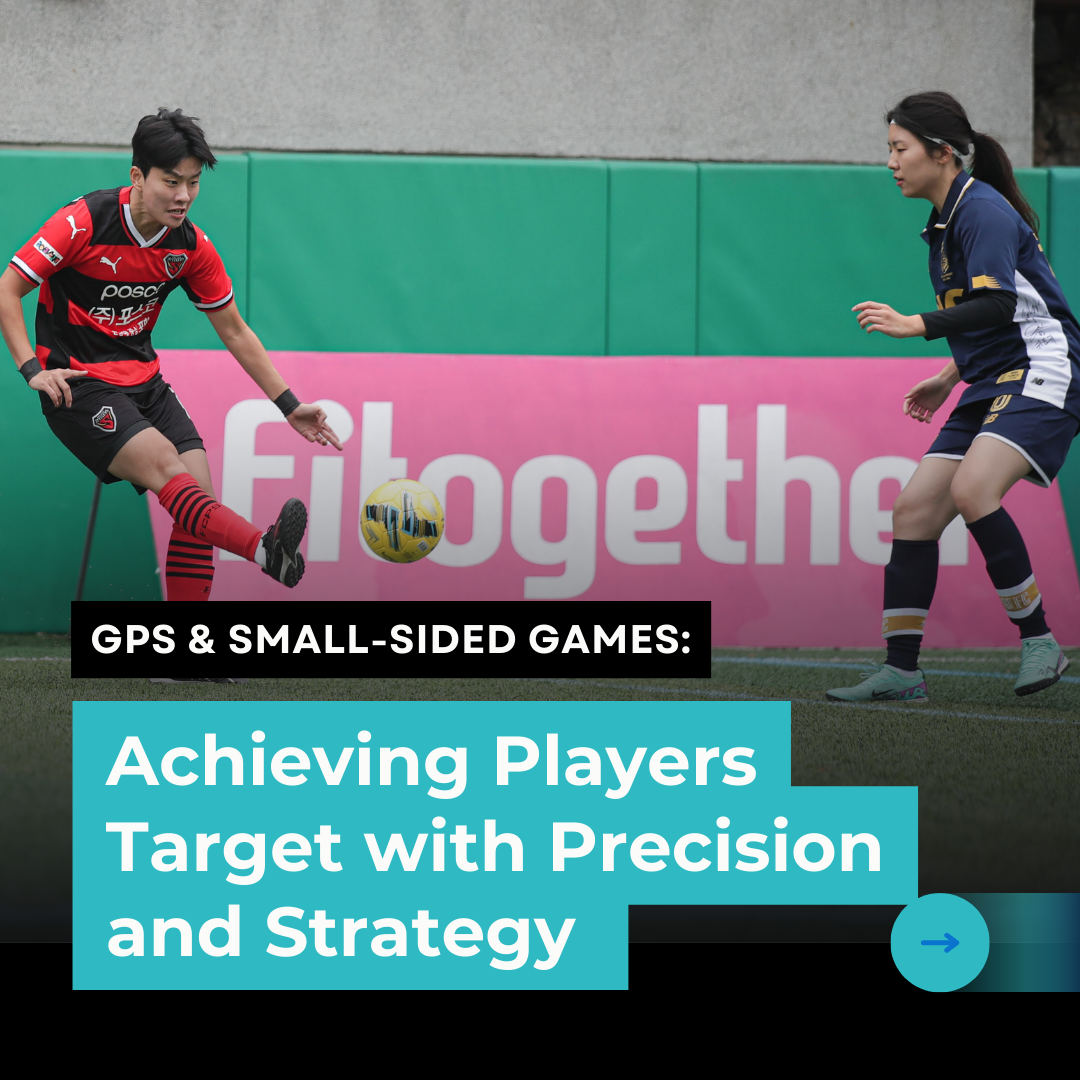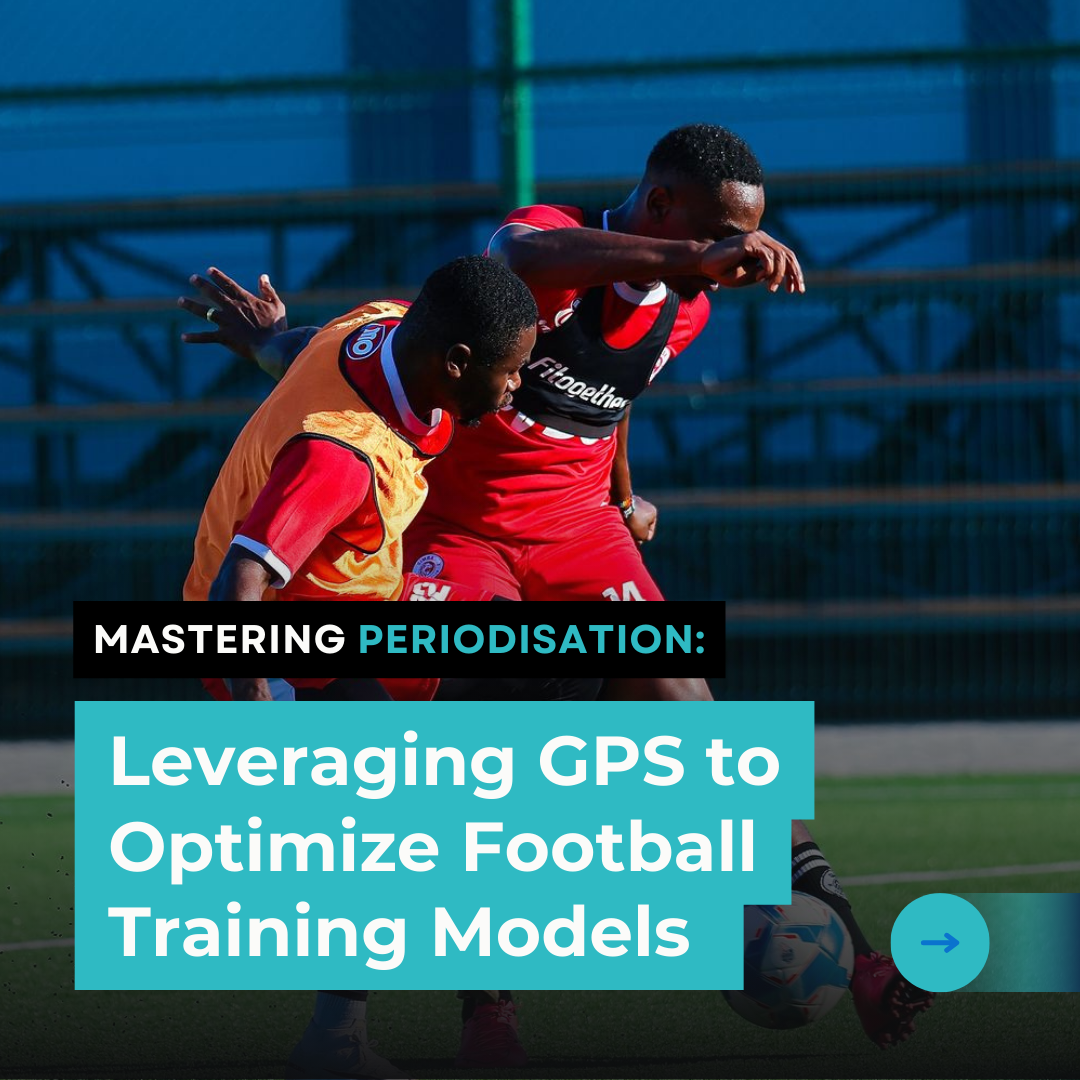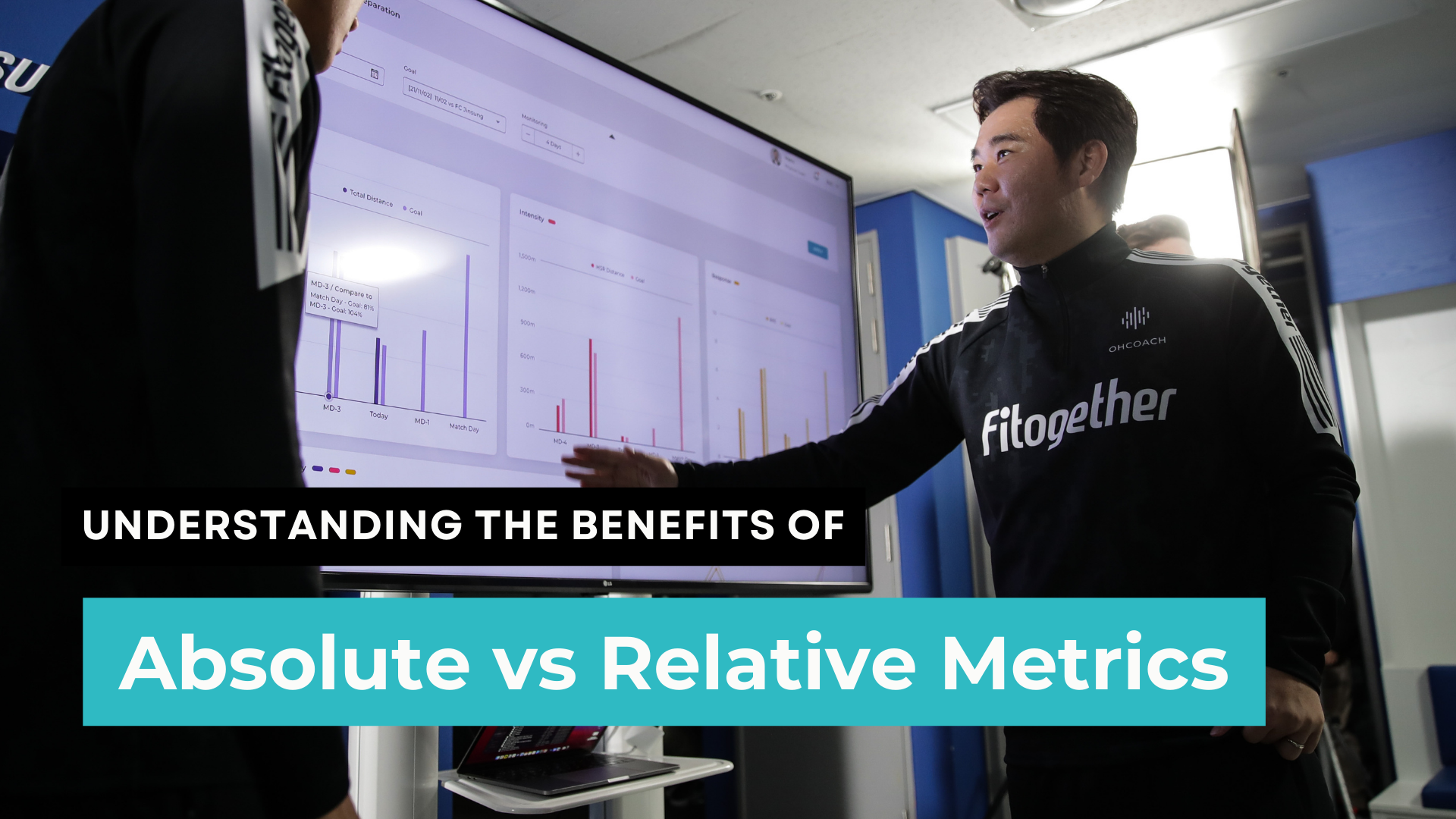
Welcome to the newest episode of Fitogether Vision & Insights! Your go-to source for staying at the forefront of sports science and technology. Our weekly updates deliver a curated blend of sports insight and knowledge!
In the world of sports science and performance analytics, Electronic Performance Tracking Systems (EPTS) have emerged as indispensable tools for optimizing athlete performance and mitigating the risks of injuries. But when it comes to tracking speed and other stats, should we look at absolute numbers or compare them relatively? Let's break it down in this episode with our discussion with our Sport Scientist, Charles Cullen (ASCC)

Q: “Charles, tell us briefly first, what are the distinctions between absolute and relative values in profiling players, and what are the benefits associated with each approach?”
So what is it that I am talking about.. Sport scientist usually uses some key metrics to profile their players, such as high-speed running (combining Fitogether Speed Zones 4 & 5, >5.5m/s), sprint distance (>7.0m/s), and maximum speed. However, it's important to note that every player has different physical capabilities. For example, you'd typically expect a winger to be faster than a center-back (CB). So, should we compare them equally? Let's break down absolute and relative values before comparing the benefits of each.
Absolute Metrics: Unquestionable Benchmark
”Absolute metrics provide a simple and straightforward comparison between players when evaluating their physical performance. This means we can provide reports for training sessions and matches without distinguishing between individual players. For example, I can observe that my two wingers consistently run with higher intensity during competitive games, which is crucial given the increasing demands of modern-day sports.
During a session, the ability to reach the ball quickly can make all the difference between winning and losing matches. Absolute metrics provide a true measure of a player's physical capability without the need for individualization. Additionally, they allow coaches to rank players based on their genuine maximum speed and ability to run at high speeds.
However, using fixed speed zones doesn't consider each player's individual maximum speed capacity. This can lead to biases favoring faster players, which may not accurately reflect their effort and fatigue levels.”
Relative Metrics: Individualisation at its core.
“On the other hand.. Relative speed thresholds tailor to each player's abilities by comparing their % maximum speed against absolute raw speed values. This method allows practitioners to profile players and adapt strategies accordingly. Establishing a player's maximum speed involves physical testing, often with players accelerating over a 40-60m distance to reach peak speed.
For instance, a winger might hit 37km/h while a center half peaks at 34km/h. If both reach 32km/h, the winger expends less effort (86% compared to 94% for the center back). This means the center back faces increased physical demands to achieve the same speed, especially when repeated efforts are considered.”
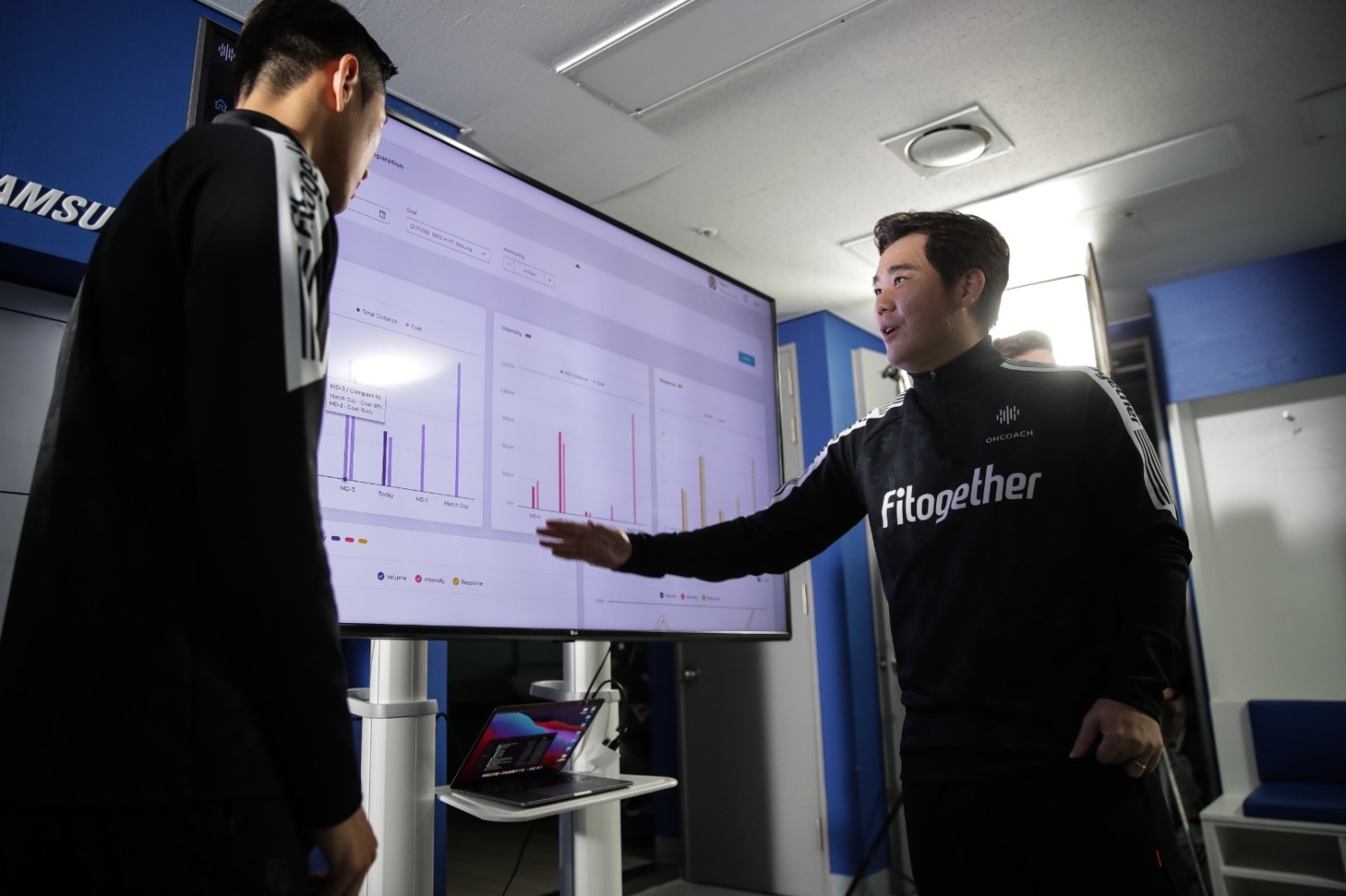
”So having this information, what are the benefits of individualising these data points?”
”Relative speed metrics offer clear insights into the demands placed on players and guide future planning, especially in injury prevention and rehabilitation processes.
Below is a graph, for example, illustrating players with various individual maximum speeds. By using the default threshold of 70% max speed for 'Relative Sprint Distance' in the EPTS system, we can observe differences between their absolute sprint distance (7m/s) and relative sprint distance (70% max speed).”
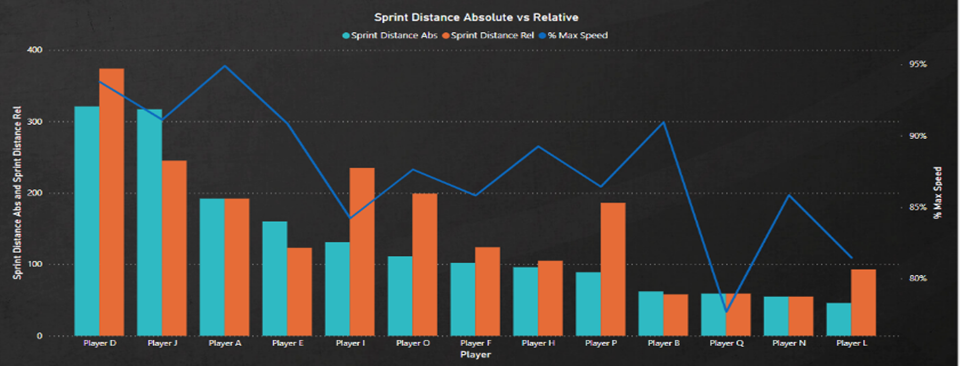
"Ok, but..how does understanding this player's maximum speed influence both injury prevention and the rehabilitation process following injuries?”
“Great question!
For Injury Prevention: Precisely planning sprint exposures is key. Knowing a player's maximum speed enables setting targets of around 1-3 times per week for them to achieve 90-95% of their max speed, a crucial tool for preventing hamstring injuries.
Meanwhile, for Rehabilitation Processes: After injuries occur, knowing a player's max speed allows for a personalized and structured plan to safely return to training and competition. Rehabilitation procedures typically require a progressive plan for various metrics, especially max speed achieved in each session. By aiming for specific percentages of max speed (50/60/70/80/90%), players can safely progress through their rehabilitation sessions."
“Ah! So now we know what are relative and absolute values. Where does that leave us when deciding which one to utilise?”
“The answer is both of them.
Relative thresholds allow you to establish the physical effort of players, they allow you to establish a player profile which can be used during any unfortunate rehabilitation time and can allow for individualisation when it comes to analysing your players.
Absolute thresholds allow for more consistency, the ability to have a direct comparison between players and allow for a cleaner and easier to understand report when presenting data to your key stakeholders.”
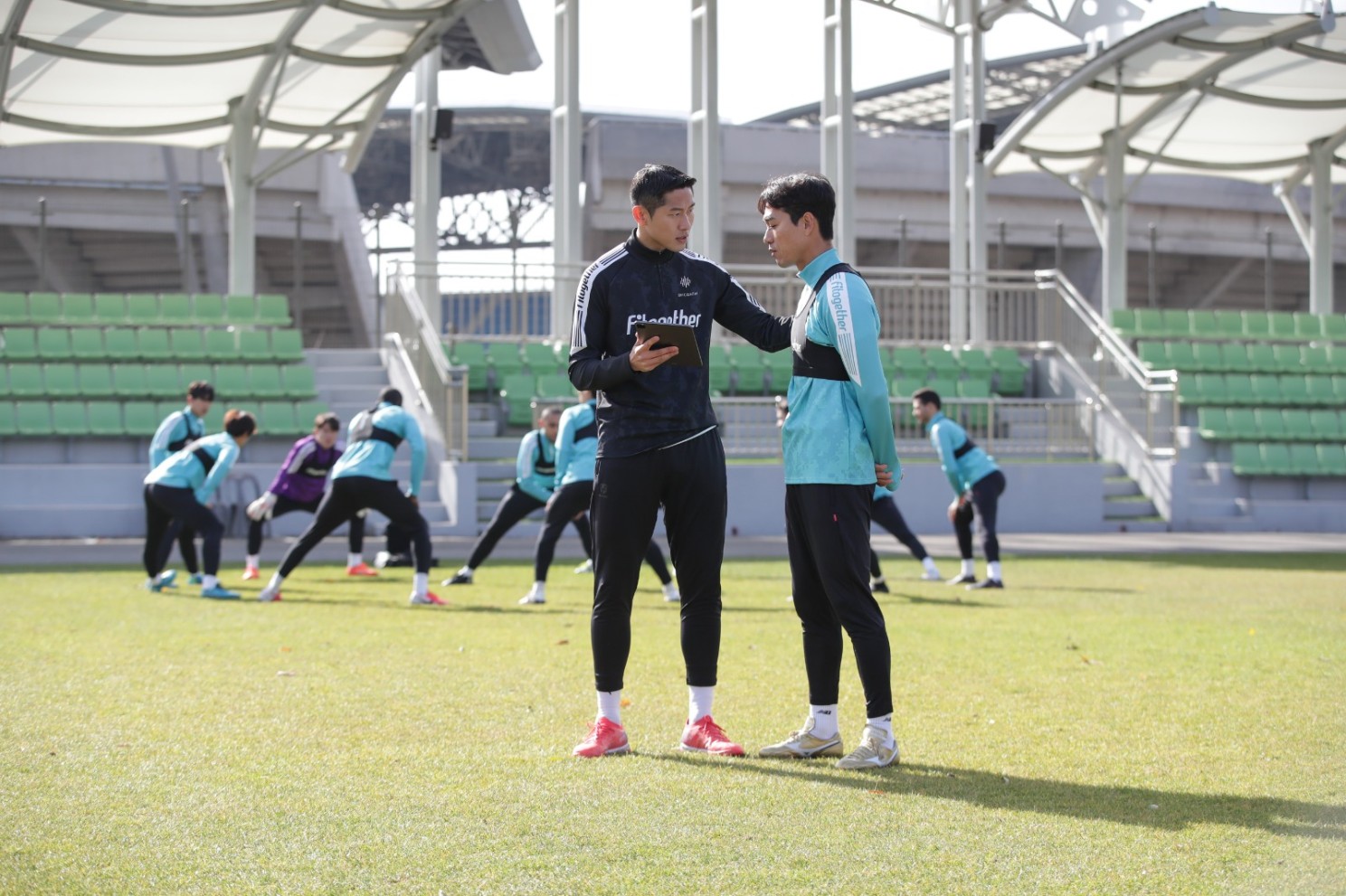
In conclusion, is that, interpreting data is crucial for providing insights, and the choice between absolute and relative thresholds depends on the audience and situation. However, utilizing both approaches offers the best chance of achieving the overall goal of reducing injuries and enhancing performance.
Now you understand the distinction and significance of relative versus absolute metrics, as well as the importance of utilizing both to achieve overarching goals. But before anything else, ensure you record your players' data with a GPS system.
Our preferred choice, Fitogether, offers the highest accuracy and is FIFA's preferred option for EPTS technology. Afterward, our experts are ready to help you make the most of this data. If you need advice or assistance, simply schedule a call with our representatives.
.png)
